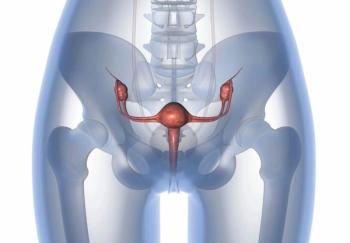
Oncology NEWS International
- Oncology NEWS International Vol 11 No 10
- Volume 11
- Issue 10
Ductal Lavage Identifies Patients for Chemoprevention
ORLANDO-The routine use of ductal lavage in a high-risk breast surgical oncology practice will identify many patients who may benefit substantially from chemoprevention with tamoxifen (Nolvadex), and may detect rare contralateral breast cancers missed by traditional methods, according to a report at the 38th Annual Meeting of the American Society of Clinical Oncology (abstract 193).
ORLANDOThe routine use of ductal lavage in a high-risk breast surgical oncology practice will identify many patients who may benefit substantially from chemoprevention with tamoxifen (Nolvadex), and may detect rare contralateral breast cancers missed by traditional methods, according to a report at the 38th Annual Meeting of the American Society of Clinical Oncology (abstract 193).
William C. Dooley, MD, professor of surgery and medical director of the Institute for Breast Health at the University of Oklahoma Health Sciences Center, reported on 77 women who underwent intraoperative ductal lavage. The study included 68 patients undergoing surgery for stage 0-II primary breast cancer; 5 patients with elevated breast cancer risk by the Gail model who underwent microductectomy for pathologic nipple discharge; and 4 patients who underwent re-excision of core-biopsy-proven atypical ductal or lobular hyperplasia.
All patients had at least one fluid-producing duct in the normal contralateral breast, which was successfully cannulated for ductal lavage in the operating room at the time of the surgical procedure. Cytologic diagnoses from the contralateral procedure revealed 19 patients (25%) with atypia, 16 (21%) with a hypocellular specimen, and 42 (55%) with benign cells.
In 15 patients with the finding of contralateral atypia78% of all patients with atypia and 19% of all 77 patientsthis information changed the management of the patient’s breast disease. This was usually the addition of tamoxifen as a chemo-preventive strategy where it would not have been prescribed without the information from the contralateral breast, Dr. Dooley reported.
In one case, the finding of atypia led to the diagnosis of an occult malignancy that was clinically and radiologically unsuspected.
The study adds to data from a previous larger multicenter study in which these authors participated. In that study, ductal lavage in high-risk women revealed abnormal cells in 93 of 383 women (24%). The abnormal cytology fell into the following categories: 17% mildly atypical, 6% markedly atypical, and 0.5% malignant.
Ductal lavage resulted in the collection of significantly more ductal epithelial cells than did the traditional collection method of nipple aspiration with a manual suction cup. The rate of adequate specimen collection and the diagnostic sensitivity were significantly higher with ductal lavage; fluid-yielding ducts were identified in 84% of subjects; and the concordance with the initial independent cytologic diagnosis was 89%.
The procedure is safe and well tolerated, and is now recommended by these authors for patients at high risk in a surgical oncology practice.
Articles in this issue
about 23 years ago
FDG-PET Predicts Prognosis in Primary Osteosarcomaabout 23 years ago
Vaccine Turns Immune System Against Cancer Cellsabout 23 years ago
Three Themes to Guide von Eschenbach at NCIabout 23 years ago
Arimidex Approved for Early-Stage Breast Cancer in Postmenopausal Ptsabout 23 years ago
Long-Term Exposure to Diesel Exhaust Poses Lung Cancer Riskabout 23 years ago
Most Americans Unaware of Excessive Weight as a Risk for Some Cancersabout 23 years ago
Three Themes to Guide von Eschenbach as NCI Directorabout 23 years ago
Gleevec Gets FDA Priority Review for First-Line Use in Early CMLabout 23 years ago
New Anti-HIV Agent Prevents Virus From Entering Cellabout 23 years ago
Docetaxel/Gemcitabine Effective in Advanced NSCLCNewsletter
Stay up to date on recent advances in the multidisciplinary approach to cancer.



















































































